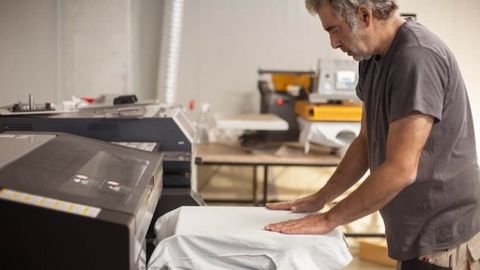Ultrasound Machines Explained: A Complete Guide to Working Principles and Key Insights
Ultrasound machines are medical devices that use high-frequency sound waves to produce images of the inside of the body. A probe (transducer) sends sound into the body, the waves bounce off tissues and organs, and the returning echoes are converted into visual images that healthcare professionals can interpret.
These machines exist because there is a need for diagnostic tools that are non-invasive, safe, and widely accessible. Unlike X-rays or CT scans, ultrasound does not use ionising radiation, making it particularly suitable for pregnancy monitoring, assessing soft tissues, and real-time internal imaging.
Advances in piezoelectric materials, transducer technology, and computing power made real-time ultrasound imaging possible, allowing clearer and faster image formation that supports better clinical decision-making.
Importance – Why this topic matters today, who it affects, and what problems it solves
Ultrasound machines play a crucial role in modern healthcare systems. Their applications extend from basic diagnostic imaging to advanced clinical procedures.
Who it affects
-
Patients: Used in obstetrics, cardiology, radiology, and emergency care.
-
Healthcare professionals: Radiologists, sonographers, and clinicians rely on accurate ultrasound images.
-
Healthcare systems: Especially beneficial in areas where advanced imaging tools like MRI or CT are not available.
What problems it solves
-
Non-invasive imaging: Allows internal examination without surgery or radiation.
-
Real-time imaging: Provides live visualization of blood flow, organ motion, and fetal growth.
-
Accessibility: Portable ultrasound devices extend diagnostic services to rural and remote areas.
-
Safety: Preferred for pregnant women and children due to its non-ionising nature.
-
Efficiency: Enables rapid diagnostics and supports procedures such as biopsies or guided injections.
Because of these features, ultrasound is vital for early diagnosis, monitoring, and guiding medical interventions, improving patient outcomes while reducing overall healthcare burden.
Recent Updates – Changes, trends, or news from the past year
Over the past year, several key trends have shaped the ultrasound landscape:
-
Artificial Intelligence (AI) integration: AI tools now assist in automating measurements, enhancing image quality, and speeding up workflows. This allows even non-specialist clinicians to perform scans with greater accuracy.
-
Portable and handheld systems: Compact ultrasound devices are becoming more common, helping extend diagnostic capabilities to field and community settings.
-
3D/4D imaging improvements: Modern systems offer enhanced spatial visualization, making fetal, cardiac, and organ assessments more detailed and dynamic.
-
AI-driven analytics: Predictive algorithms are improving disease detection and assisting in quantitative imaging.
-
Tele-ultrasound and cloud integration: Remote diagnostics are now possible, allowing real-time consultations and training through connected platforms.
These innovations show how ultrasound is evolving from a hospital-bound system to a mobile, intelligent diagnostic companion that supports global healthcare accessibility.
Laws or Policies – How regulations or government programmes affect this topic (India)
In India, ultrasound use—especially for prenatal purposes—is governed by strict regulations designed to ensure ethical and safe use.
Key regulation:
-
The Pre-Conception and Pre-Natal Diagnostic Techniques (Prohibition of Sex Selection) Act, 1994 (PCPNDT Act): Regulates all prenatal diagnostic techniques, including ultrasound, to prevent misuse for sex determination.
-
Government guidelines: Recommend a single routine obstetric ultrasound at 18–19 weeks of gestation for low-risk pregnancies.
Operational and equipment rules:
-
Every ultrasound machine used for prenatal imaging must be registered under the PCPNDT Act.
-
Equipment must meet minimum performance standards, including B-mode, M-mode, and Doppler imaging capabilities.
-
The ALARA principle (As Low As Reasonably Achievable) must be followed to minimise exposure.
-
Recent proposals under the Digital Governance System for Ultrasound Devices aim to digitally register and monitor ultrasound units under the Ayushman Bharat Digital Mission framework.
These rules ensure responsible use of ultrasound technology, protect maternal rights, and maintain transparency in diagnostic practices.
Tools and Resources – Helpful tools, apps, websites, calculators, and templates
A number of digital and educational tools support ultrasound learning and clinical practice:
-
Imaging physics tutorials: Online modules that explain sound wave propagation, image formation, and Doppler effects.
-
Regulatory guidelines: Downloadable PDF documents detailing ultrasound usage protocols, safety measures, and documentation standards.
-
Clinical reporting templates: Standardised checklists for obstetric, abdominal, and cardiac ultrasound examinations.
-
Market reports: Global insights on ultrasound equipment trends, AI integration, and adoption in emerging markets.
-
AI learning platforms: Simulation-based systems that teach image acquisition and interpretation skills for students and professionals.
These tools provide valuable support for clinicians, trainees, and policymakers working to enhance diagnostic quality and compliance.
FAQs – Frequently asked questions
Q: How does an ultrasound machine create an image?
A: The transducer emits high-frequency sound waves into the body. These waves reflect off internal tissues, and the returning echoes are captured and converted into digital images. This process happens in real time, allowing clinicians to view moving organs or blood flow instantly.
Q: Is ultrasound safe?
A: Yes, ultrasound is one of the safest imaging methods because it uses sound waves instead of radiation. When used correctly by trained professionals, it poses minimal risk to both patients and operators.
Q: What are the main types of ultrasound transducers?
A: Common types include linear, convex (curved), phased array, and endocavitary probes. Each serves different imaging purposes—linear for shallow structures, convex for abdominal organs, and phased arrays for heart imaging.
Q: What are the current trends in ultrasound technology?
A: Recent trends include AI-driven automation, improved 3D/4D imaging, handheld portable systems, and tele-ultrasound for remote diagnostics and education.
Q: How is ultrasound regulated in India for pregnancy scans?
A: The PCPNDT Act ensures that ultrasound is used strictly for medical reasons and not for gender determination. All machines and centres must be registered, and every scan must follow approved documentation and consent procedures.
Conclusion
Ultrasound machines have transformed modern medicine by offering a safe, accessible, and dynamic way to view internal body structures. They help doctors diagnose conditions early, guide treatment, and monitor patient progress without invasive procedures.
With rapid advancements such as AI integration, portable devices, and cloud-connected systems, ultrasound technology is becoming even more intelligent and inclusive. Combined with strong regulatory frameworks, these innovations are setting the stage for a future where accurate, real-time imaging is available everywhere—from advanced hospitals to rural clinics.






